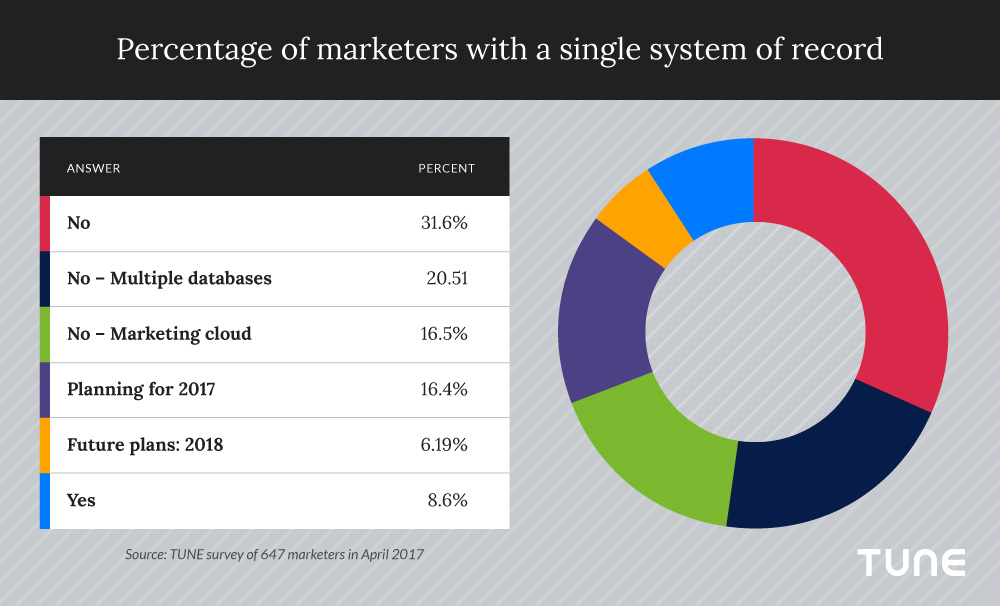
Customer journey mapping is hard. Every marketer who has tried knows this.
And technology has been a mixed blessing here, because what technology gives on the one hand: additional information, mapping tools, and customer data platforms, it takes on the other. Mobile, cross-device journeys, cross-platform journeys … stitching it together is hard.
Having a single marketing system of record is a big missing piece.
But there are also some big changes happening to martech and adtech which make customer journeys challenging.
This is part four of a five-part series on customer journeys in a #MobileBest world
Read part one, part two, and part three
Get the entire free report now
We surveyed 647 marketers about the value, technology, and problems with customer journeys. We also asked marketing influencers — including media, analysts, CMOs, and journalists — how customer journeys work, what’s wrong with them, and if marketers should even bother.
As we surveyed marketers on customer journeys, mapping, and technology, more than a few interesting — and unexpected — insights emerged. And, some new opportunities popped up.
Here are a few of them …
Brand & performance have merged
When 647 marketers rank brand advertising and performance advertising by where they’re most useful in the customer journey and the results are almost identical, that indicates something: we’re entering an era of marketing accountability.
Traditionally, brand advertising introduces a new product or brand to people. Performance advertising encourages them to purchase. And more brand campaigns assist in customer retention and increased share of wallet …
Not anymore. Look how similarly marketers scored them:
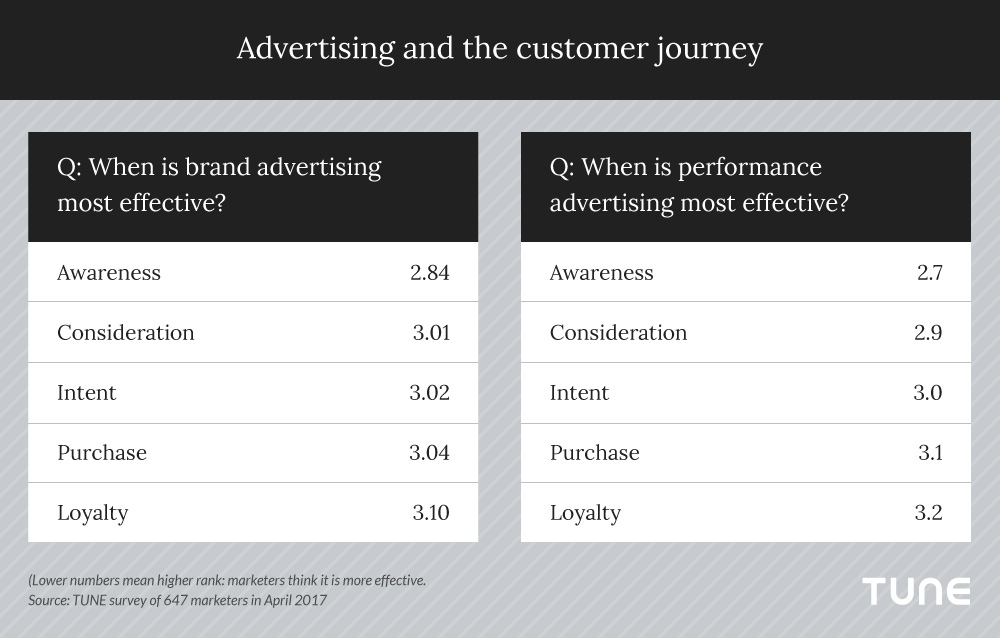
Clearly, marketers are thinking that brand advertising and performance marketing rank equally in the traditional awareness stage of the customer journey.
Also clear: Marketers now expect brand campaigns to return positive ROI, not just positive vibes. And performance campaigns need to boost the brand, not just make money.
There’s a hole in the funnel: Consideration, intent, purchase
By far, awareness and loyalty are marketers’ favorite areas of the funnel. These stages of the customer journey get most of marketers’ first-place votes when we asked them where both performance and brand advertising are most useful.
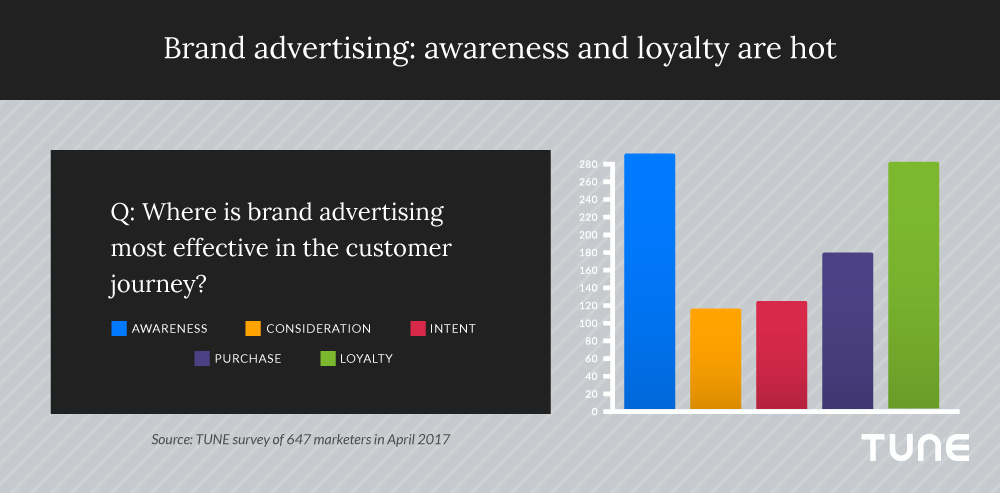
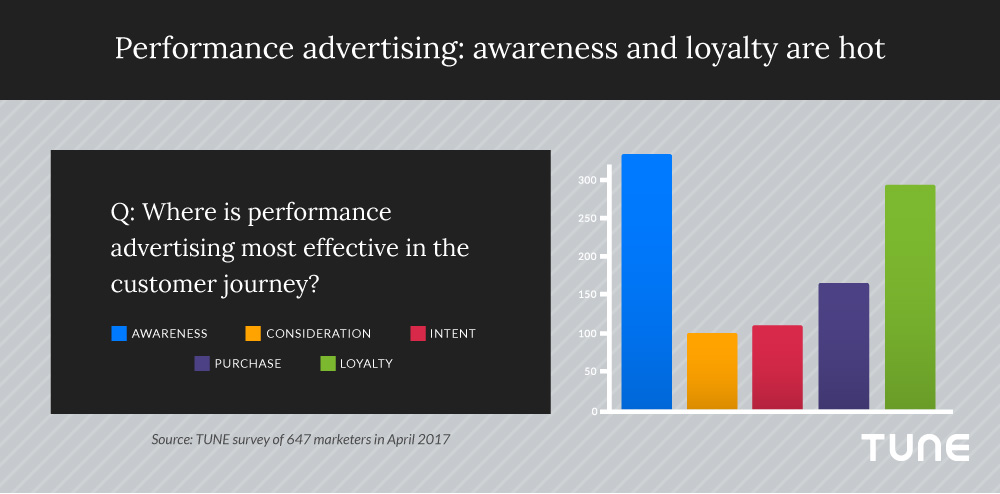
What about consideration? Intent? Purchase? Marketers are largely ignoring them.
For brand advertising, these three stages — 60% of the customer journey — get only 42.4% of first-place votes. And for performance advertising, this 60% of the journey gets only 37% of the first-place votes.
So maybe there’s a hole in the funnel … but it just may be warranted.
No one can do business with you before they know about you in some way. And loyalty is critical, as current CMO and former Forrester analyst Cory Munchbach says:
“The most influenceable and most valuable is the loyalty phase, and yet arguably the one most neglected and underfunded. The data points proving this out are rife, and yet it doesn’t seem like the trend changes much – discrete teams are responsible for discrete phases of the life cycle even though each phase has an impact on the others.”Cory Munchbach, VP Marketing at BlueConic, former Forrester analyst
That said, there’s also something to be said for the point of purchase where performance advertising can be most effective — and where we do see a bump in marketer interest. And, arguably, our modern focus on nurture marketing helps carry prospects from awareness into loyalty.
A core architectural flaw in most marketers’ tech stacks
Out of all a company’s many functions and divisions, marketing stands isolated as a core and key function that does not have a single system of record.
Finance has a system of record: whatever accounting software the company has chose. Sales has a system of record: CRM. And business management, HR, and other divisions have a system of report, an ERP system.
Marketing? Not so much.
Less than 9% of marketers have a single marketing system of record.
Modern marketers deal in data. Prospects, customers, and fans are defined by who they are, how they feel about the brand, and what they do. But most marketers completely lack the central glue that ties together all the information they have: a system of record.

Modern customers pop up on companies’ websites, in their mobile apps, on their social feeds and outposts, in their email, in their stores, and in multiple other places both digital and offline. In addition, smart marketers look for data deeper into the customer journey, post-sale, so they can measure customer satisfaction, Net Promoter Score, and likelihood of customers becoming advocates. So marketers need data about product usage, service issues, and more.
All that data needs to come together in one place — literally or via API — so marketers have a complete view of their customer across the entire marketing and product lifecycles, and can make it actionable via technologies of engagement in mobile, on the web, in email, and all the other ways that companies communicate to prospects and customers.
That is a single marketing system of record.
The reality, however, is that very, very few marketers actually possess it today.
This has been part four of a five-part series on customer journeys in a #MobileBest world
Get the entire free report now
The topic next time in part five? The Marketing Tech of the Future.
Author
Before acting as a mobile economist for TUNE, John built the VB Insight research team at VentureBeat and managed teams creating software for partners like Intel and Disney. In addition, he led technical teams, built social sites and mobile apps, and consulted on mobile, social, and IoT. In 2014, he was named to Folio's top 100 of the media industry's "most innovative entrepreneurs and market shaker-uppers." John lives in British Columbia, Canada with his family, where he coaches baseball and hockey, though not at the same time.


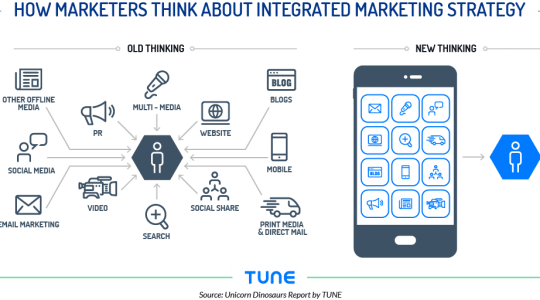

Leave a Reply
You must be logged in to post a comment.